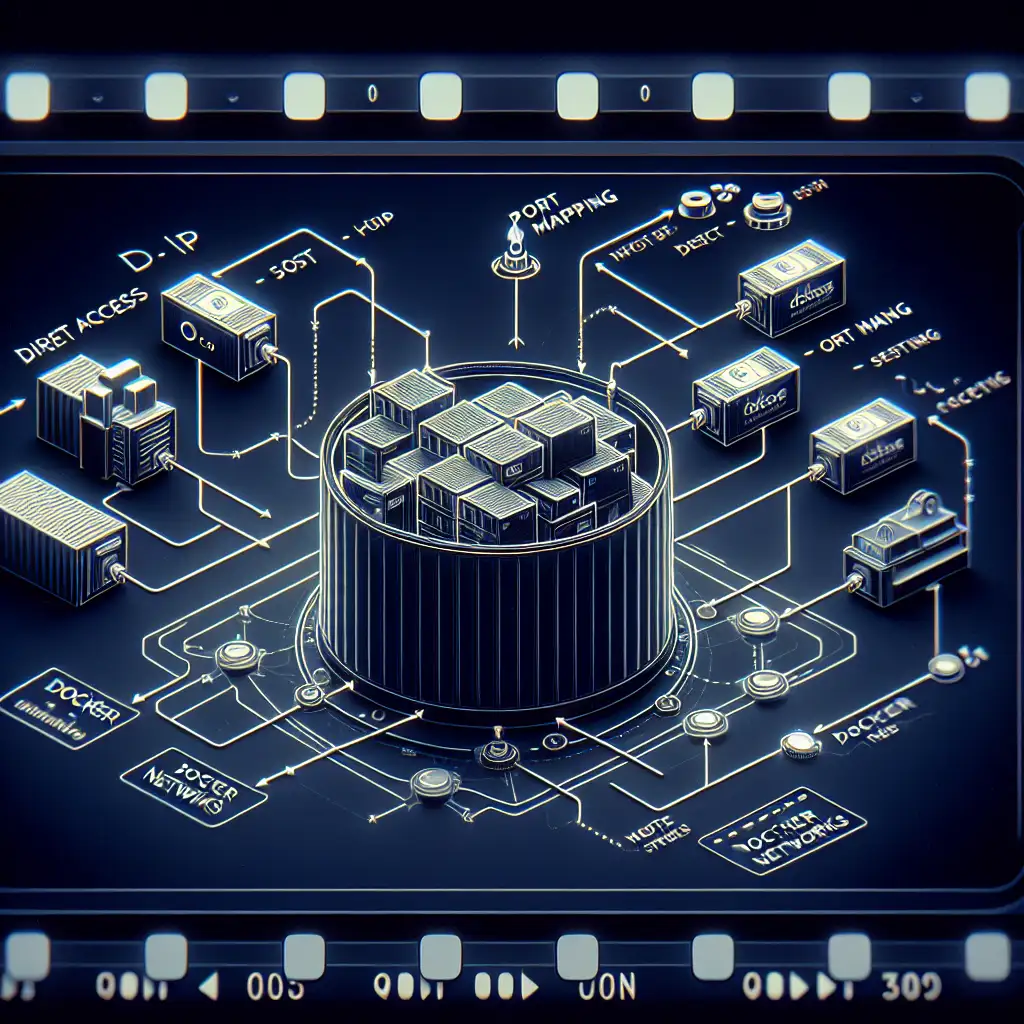Mastering Host Access to Docker Containers: Approaches Beyond Port Mapping
Port mapping (-p 8080:80) only goes so far—useful for simple services, insufficient for low-level diagnostics or container orchestration. Direct host-to-container interaction avoids many pitfalls, including host port exhaustion, overexposed interfaces, and noisy debug endpoints. Below, several targeted techniques—tested in real DevOps workflows—enable robust host access for troubleshooting, monitoring, and integration, without falling back on broad network exposure.
Rethinking Port Mapping: When It Fails
Classic:
docker run -p 8080:80 nginx:1.25-alpine
Accessible, yes, but:
| Problem | Impact |
|---|---|
| Host port conflicts | Block CI pipelines |
| Container port reuse | Multiple services collide |
| Security boundaries blurred | Accidental 0.0.0.0 exposure; e.g., curl from any VLAN |
| Debugging ephemeral services | No time to map |
Where you need internal-only HTTP APIs or volatile test instances, publishing ports increases attack surface and causes local pain.
1. Diagnosing Live with docker exec
Direct shell access trumps network tunnels for process introspection.
docker exec -it myapp_container_2a53f /bin/bash
or for Alpine-based images:
docker exec -it <cid> /bin/sh
Use cases:
- Attach
straceto misbehaving processes. - Tail application-specific logs.
- Directly manipulate ephemeral config.
Example:
docker exec -it db-redis-1 ps aux
docker exec -it db-redis-1 redis-cli MONITOR
Note: Write access inside containers is often ephemeral; restarting drops your changes unless using volumes.
2. Container Networking from the Host: Bridge, Overlay, and Gotchas
Docker’s bridge network on Linux allows direct layer 3 communication from host → container. On Docker Desktop (macOS, Windows), the story is different: virtualization restricts container IPs from host reachability.
Inspect current topology:
docker network inspect bridge | jq '.[].Containers'
Find container IP:
docker inspect -f '{{range .NetworkSettings.Networks}}{{.IPAddress}}{{end}}' myapp_container_2a53f
Test connectivity—on Linux only:
curl http://172.17.0.5:8000/healthz
Known issue: On Docker Desktop, this yields No route to host. Workarounds exist (see next section) but may introduce complexity.
3. Escalated Diagnostics: nsenter and Kernel Namespaces (Linux)
For deadlocks or in-depth process state analysis, ordinary exec isn’t sufficient. nsenter places your session inside all container namespaces: PID, net, IPC, UTS, and mount.
System requirement: util-linux ≥ 2.27
Quickstart:
CONTAINER=myapp_container_2a53f
PID=$(docker inspect --format '{{.State.Pid}}' $CONTAINER)
sudo nsenter --target $PID --mount --uts --ipc --net --pid /bin/bash
What changes? You gain full access to /proc, see all container processes (including zombie/defunct states), and review iptables or cgroup config as the container “sees” it.
Gotcha: Mistakes here affect the container kernel context—do not run destructive commands unless you understand namespace isolation.
4. Sharing Data: Volumes for Log and Config Extraction
Mount volumes for cross-boundary file persistence. Example for logs:
docker run \
-v /srv/logs/nginx:/var/log/nginx \
--name mynginx \
nginx:1.25-alpine
Host and container immediately see the same filesystem subtree. Useful for extracting dumps, rotating logs, and feeding metrics systems like Prometheus node-exporter.
Side note: Some orchestration platforms (Kubernetes) handle log shipping differently—here, you control mapping directly.
5. SSH Service Inside a Container: For Special Cases Only
Enabling sshd in containers is controversial. Use only when other techniques fail and automated workflows (e.g., Ansible playbooks) depend on SSH transport.
Sample Dockerfile (Debian 12 Bookworm):
FROM debian:bookworm
RUN apt-get update && \
apt-get install -y openssh-server && \
mkdir /var/run/sshd && \
echo 'root:s3cr3tpw' | chpasswd && \
sed -i 's/^#PermitRootLogin .*/PermitRootLogin yes/' /etc/ssh/sshd_config
EXPOSE 22
CMD ["/usr/sbin/sshd", "-D"]
Launch isolated (bind to 127.0.0.1):
docker run -d -p 127.0.0.1:2222:22 ssh-img:latest
ssh root@127.0.0.1 -p 2222
Warning: Even on localhost, root SSH without key-based auth is a vector. Use only in air-gapped or disposable environments.
6. File Transfer: docker cp
Fast extraction/injection of files without volume remounts:
docker cp mynginx:/var/log/nginx/access.log ./access.log
docker cp ./overrides.conf mynginx:/etc/nginx/conf.d/
Handles tar-under-the-hood, but: symlinks, sparse files, or large data sets can behave differently than expected.
7. Port Sneakpaths: socat for Ephemeral Debugging
Open a transient tunnel from host UDP/TCP → container’s private IP socket.
Start a privileged container:
docker run --rm -it --net=host alpine ash
apk add socat
socat TCP-LISTEN:9999,reuseaddr,fork TCP:172.17.0.5:6379
Connect via localhost:9999 to the container’s Redis (no Docker -p mapping). Useful for audit-only access when traditional mapping would interfere with service discovery or security group policies.
Trade-offs and Considerations
No method here is universal. For diagnostics, exec and nsenter are quickest. For repeated automation, volumes and docker cp are simpler. SSH is rarely justified outside legacy toolchains or CI agents that cannot be refactored.
Note: Docker for Mac/Windows users face virtualization boundaries—many “host-to-container” patterns simply do not work, absent specific workarounds such as custom routes or Docker Desktop bridge configuration.
Summary
Direct host access to containers, while bypassing exposed ports, demands familiarity with Docker’s process and network internals. The right tool—docker exec, nsenter, volume mapping, or controlled SSH—depends on the use case and risk profile. For ephemeral troubleshooting, avoid defaulting to permanently published ports, and understand side effects on stateful workloads.
Practical tip: always capture pre/post states before running in-container diagnostics.
Looking for automation scripts integrating these patterns into CI pipelines, or have a particularly nasty edge case? Feel free to reach out.
